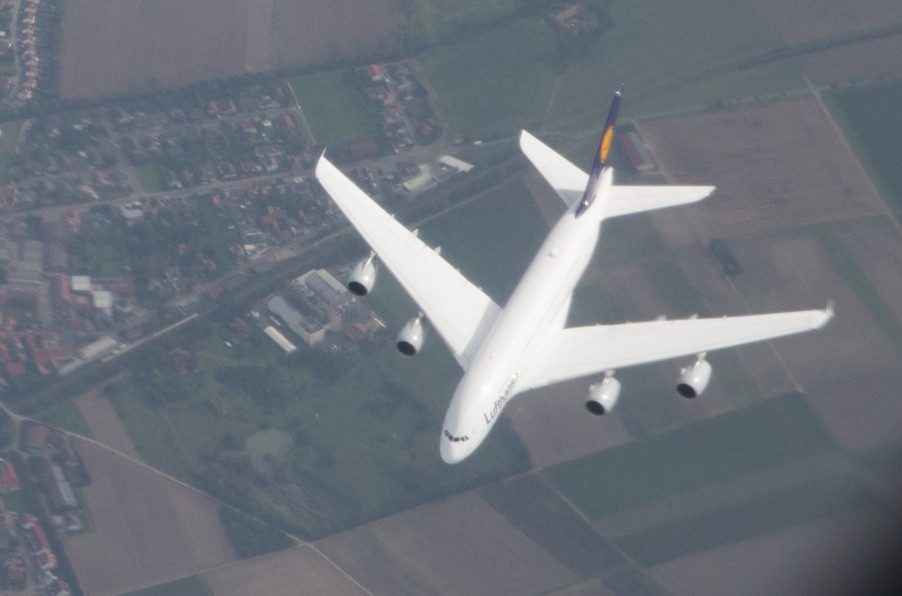That’s what I was getting at. This part of the discussion started on whether 5 degrees left or right for a limited time to avoid a cloud (without a specific clearance) will become a problem after August 2017 and I said no.
Peter wrote:
Does anyone operate PBN?
Of course. In airspace where RNAV 5 / B-RNAV is a requirement (most of Europe AFAIK), everyone operates PBN. Or should.
My question was of course tongue in cheek. When I got my IR in 2006 I flew the same way as I fly today. When you are actually flying a plane in the Eurocontrol system, nothing at all has changed. If one is flying a desk, then lots of things have changed.
boscomantico wrote:
This part of the discussion started on whether 5 degrees left or right for a limited time to avoid a cloud (without a specific clearance) will become a problem after August 2017 and I said no.
I didn’t see any mention of August 2017, but if you mean August 2018, when all IR pilots need a PBN endorsement to operate in PBN airspace, nothing at all will change airspace-wise. ATC will expect you to have the same track-keeping accuracy then as they do today or did a year ago. Some countries have already had such a requirement — e.g. before the introduction of part-NCO, Sweden required a RNAV endorsement for flight in RNAV 5 / B-RNAV airspace.
Peter wrote:
My question was of course tongue in cheek. When I got my IR in 2006 I flew the same way as I fly today. When you are actually flying a plane in the Eurocontrol system, nothing at all has changed. If one is flying a desk, then lots of things have changed.
The big difference with the coming PBN endorsement requirement is that every IR pilot will have to demonstrate that (s)he can fly RNAV 1 / P-RNAV and RNAV APCH. Also, as I mentioned above, before part-NCO a pilot with Swedish IR could not fly even in RNAV 5 / B-RNAV airspace without a national RNAV endorsement — likewise for RNAV 1 / P-RNAV.
Timothy frequently points out that many GA pilots believe they know how to do all of this properly, but few actually do — and I agree with him. The thing is that for RNAV 5 / B-RNAV it doesn’t matter much.
I, too, used to believe that this was all a piece of cake, but the more I learn the more I realise that particularly RNP APCH introduces new non-obvious ways of killing yourself or at least mess up royally.
Demonstrate on a test, yes, but I am talking about flying for real, not flying a book or a desk.
Today I was being vectored around and this chap was also being vectored around

Just like it always was.
The other day I found out that a 787 is not WAAS, so it can do GPS approaches but not LPV 
However this thread, which has quite a specific title (and intentionally so) is now totally off topic. Maybe the stuff needs to be merged into a PBN thread.
Peter wrote:
Does anyone operate PBN?
I think that’s the key. Part of the PBN concept is the route. As soon as ATC says “direct XYZ” it’s no longer PBN. Since almost all enroute weather avoidance in NW Europe occurs on such legs, nothing has or will change as regards the expected precision of that direct, which is likely to be rather greater precision than the 5 nm of RNAV 5, though the odd few degrees for a few miles to avoid a CU is unlikely to raise eyebrows,
bookworm wrote:
As soon as ATC says “direct XYZ” it’s no longer PBN.
Is there anything in the regulations about that? I’d be inclined to think it would still be PBN at least when flying in CTR/TMA.
Ultranomad wrote:
Is there anything in the regulations about that? I’d be inclined to think it would still be PBN at least when flying in CTR/TMA.
Well if you are on a heading it can’t be PBN. There is no performance about it and there is no route, you fly the heading.
On a heading, no, but I wonder what the acceptable tolerances of a Direct are?